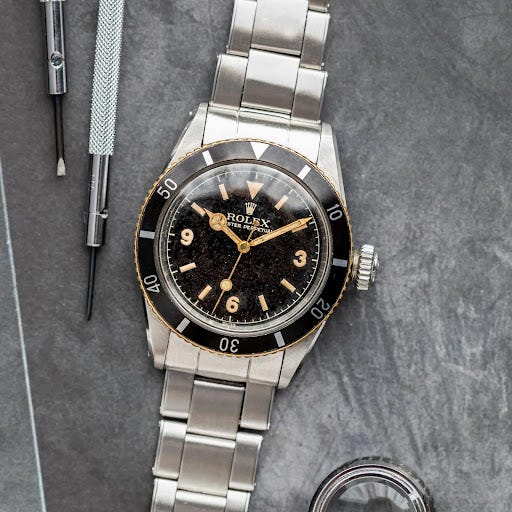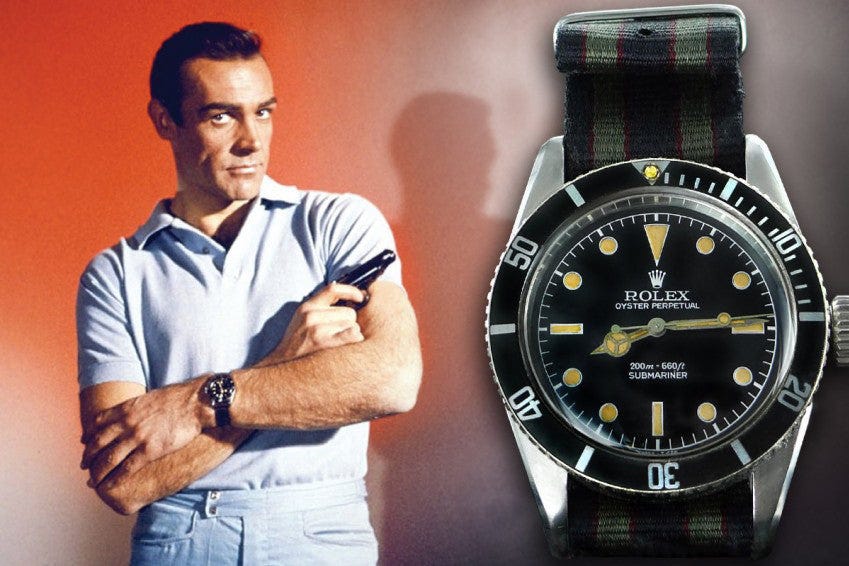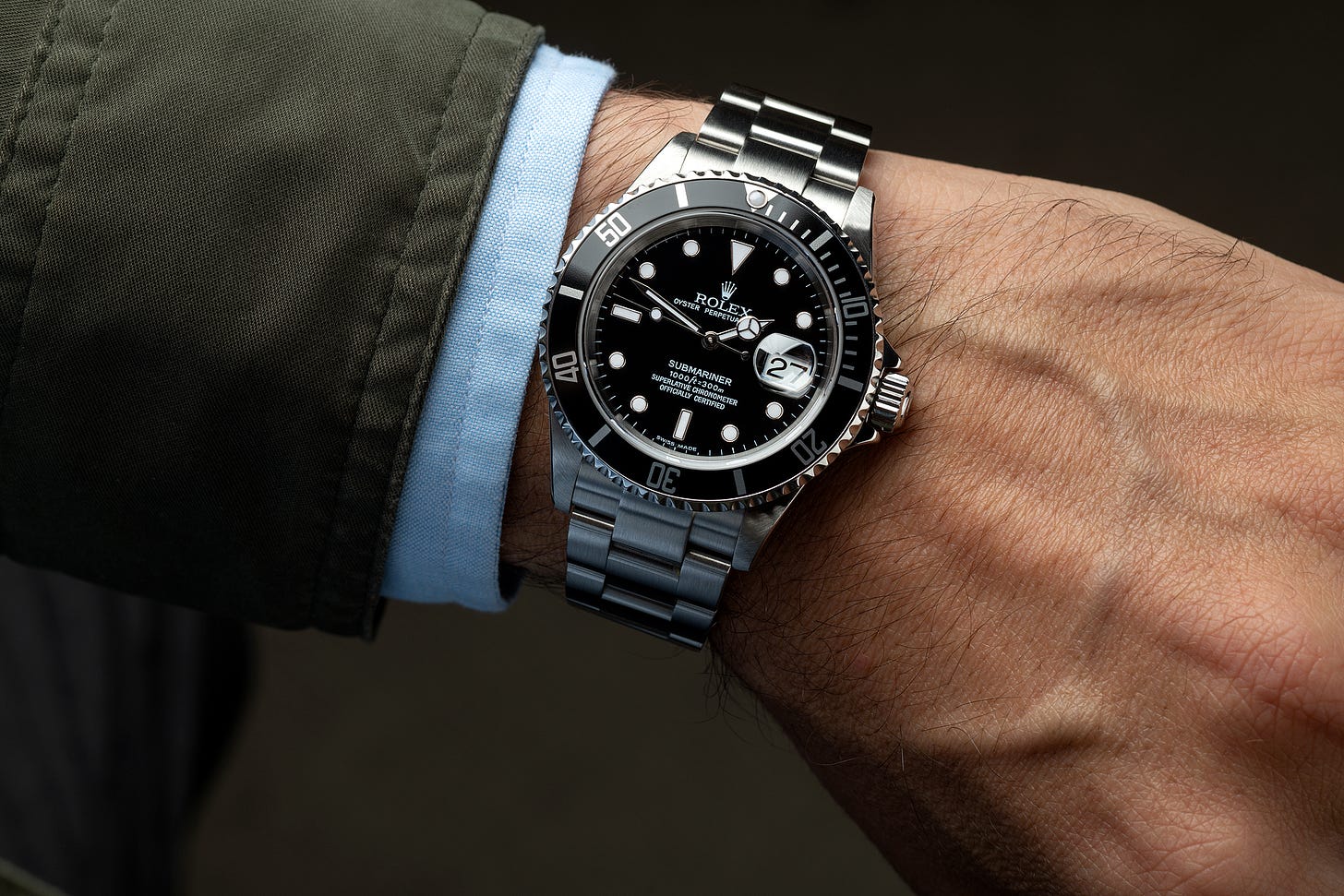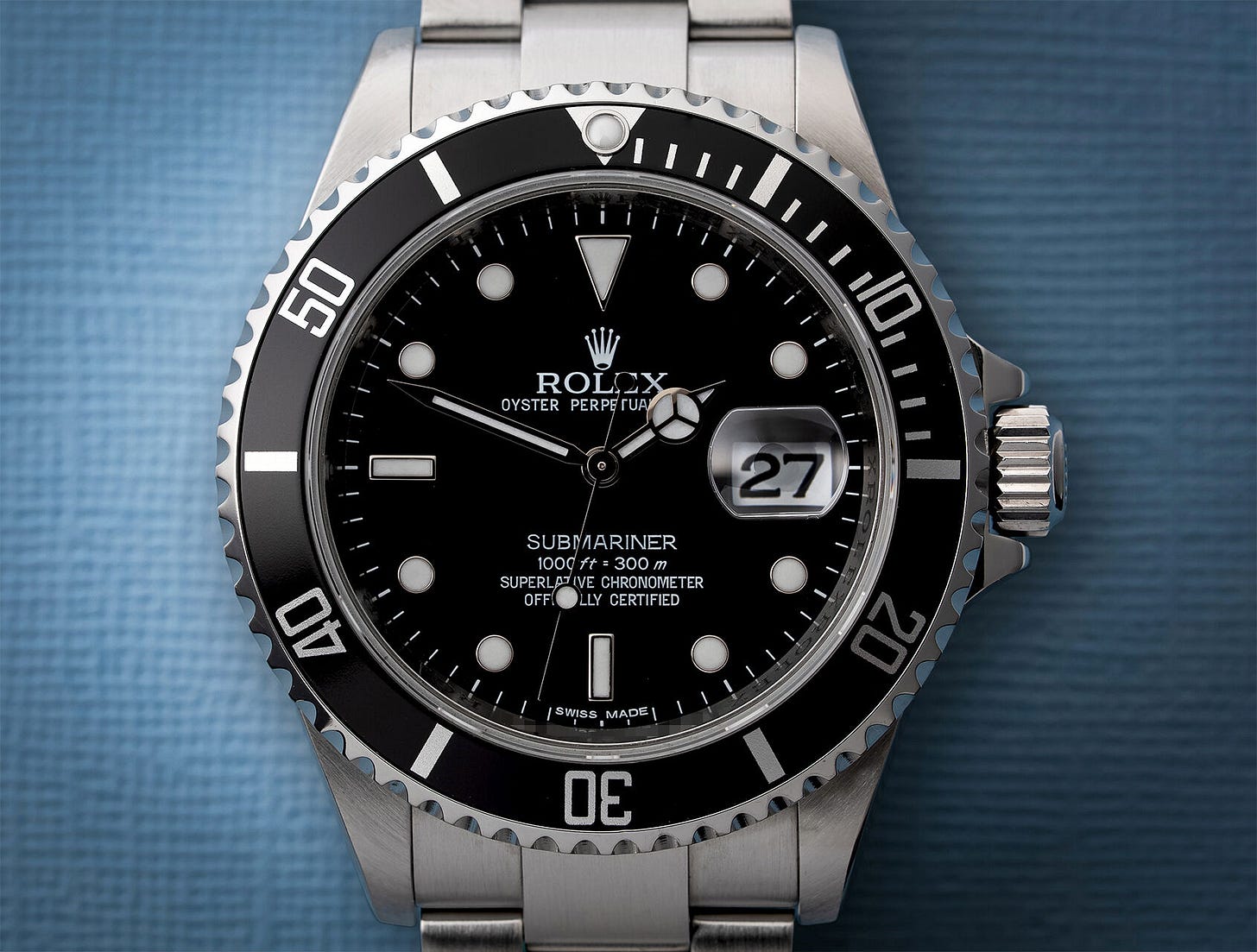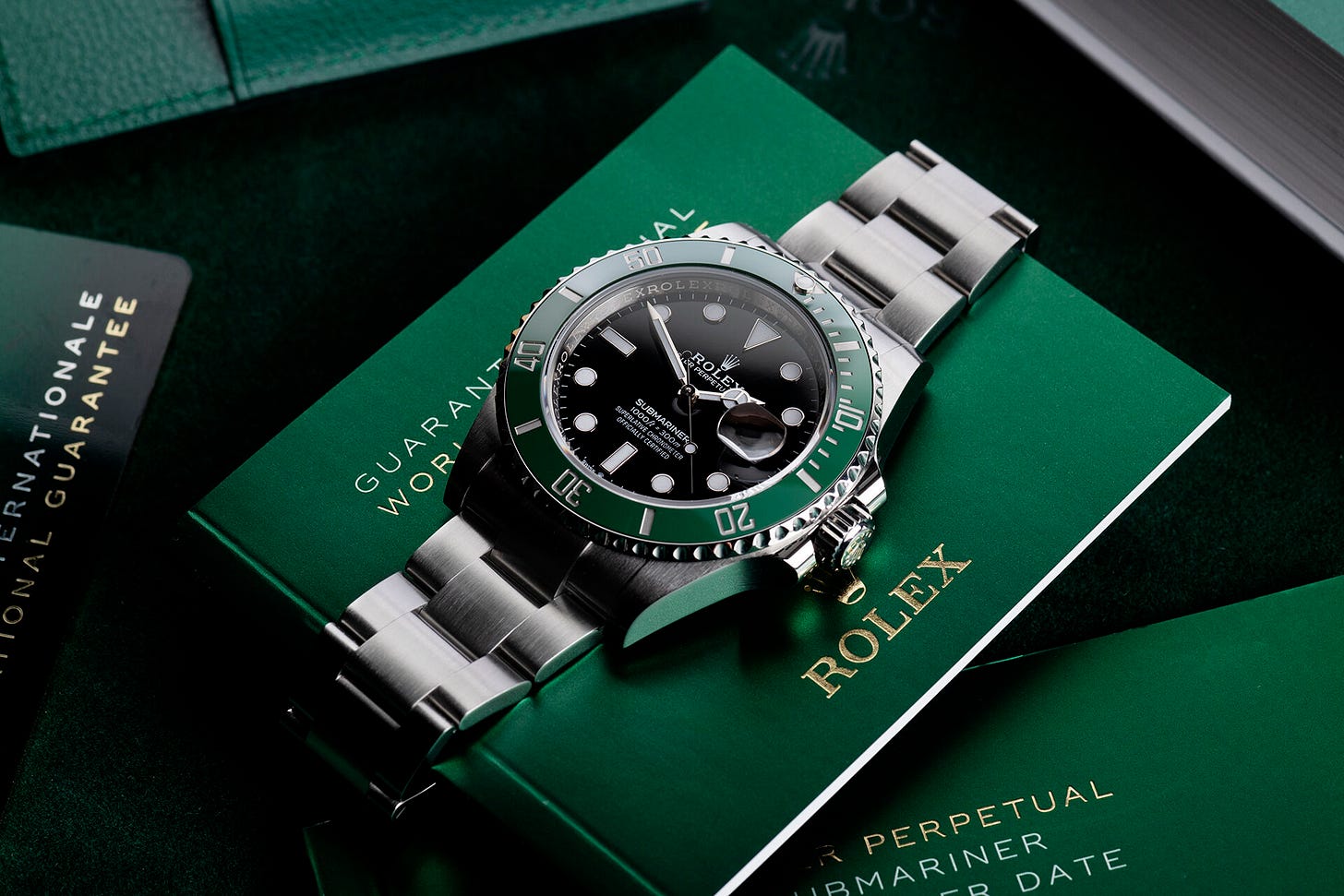Submariner Chronicles: From Deep Seas to Collector’s Dreams
Explore the legendary journey of Rolex’s iconic diver, from 1950s innovation to modern-day horological treasure.
Picture this: the 1950s, post-war optimism is in the air, and humanity is looking outward—toward the skies, the seas, and even the ocean’s hidden depths. Scuba diving is no longer the domain of a few brave souls; Jacques Cousteau’s aqualung has made underwater exploration accessible, thrilling, and dangerous in equal measure. Somewhere in Geneva, Rolex’s minds are ticking just as fast as their watches, seeing an opportunity to create something truly extraordinary: the Submariner.
The Beginning: A Diver’s Dream
It’s 1953, and René-Paul Jeanneret—an avid diver himself—takes on the challenge. The goal? A wristwatch as reliable underwater as it is on land. The result? The Rolex Submariner, waterproof to 100 meters (330 feet), debuting at Baselworld in 1954 with the Ref. 6204. It’s not just a tool—it’s a statement: “No frontier is too deep.”
Early adopters were captivated. Stories emerge of a French naval officer gliding through the Mediterranean, tracking oxygen with a Submariner glowing faintly in the dim, blue water. Across the Channel, the British Royal Navy notices, and by 1956, their frogmen are equipped with these new marvels. The watch’s black dial, rotating bezel, and robust Oyster case become synonymous with reliability. Collectors today still marvel at these early models—not only for their history but for their design, which feels both rugged and elegant.
Submariner Small Crowns and Vintage Gems
The first Submariners had small crowns, minimal text, and understated elegance. By the late 1950s, Rolex experiments with bolder designs. The Ref. 6200 surfaces with a large crown and the rare “Explorer” dial—a model that would become legendary. Collectors go to great lengths to find one today, paying eye-watering sums for what feels like a fragment of underwater history.
And then, as the 1960s roll in, the Ref. 5512 appears. Crown guards give the watch a sense of armor, while depth ratings climb steadily. This era marks the beginning of the Submariner as a symbol—not just a diving instrument. It’s a watch with a personality, a story, a legacy.
Submariners in Pop Culture
Of course, a watch’s fame isn’t only measured in meters. By 1962, the Submariner becomes James Bond’s wrist companion in Dr. No. The Ref. 6538, with its oversized crown, instantly becomes a co-star in cinematic history, accompanying Sean Connery as he outsmarts villains and seduces danger. The same watch is quietly ticking on the wrist of Jacques Cousteau, filming The Silent World, capturing underwater adventures for all of humanity to witness.
Every scratch, every patina, every worn bezel tells a story. That’s what makes the Submariner unique—not just its engineering, but the lives it touches.
The Evolution: Deeper, Bolder, Smarter
Rolex never rests. By 1989, the Ref. 16610 pushes to 300 meters with a sapphire crystal that gleams like a porthole into another world. Its Calibre 3135 movement becomes a benchmark for reliability and precision, quietly proving that a tool watch can be as elegant as it is functional.
In the 21st century, the Submariner continues to evolve. The 41mm models launched in 2020 house the Calibre 3235, boasting a 70-hour power reserve. Cerachrom bezels resist scratches with ease, and luminous Mercedes hands glow like beacons in the night. Whether you’re diving 300 meters below the surface or navigating city streets, the watch is a statement of legacy and refinement.
Collectors have a love-hate relationship with certain limited editions. The “Kermit” (Ref. 16610LV) and the discontinued “Hulk” (Ref. 116610LV) are hunted mercilessly, fetching prices far above retail. Meanwhile, a new Submariner Date will set you back around $9,150—if you can even find one. Pre-owned models? Often $10,000 and up. Worth it? Absolutely, if you value history and craftsmanship over mere numbers.
Why the Submariner Captures Hearts
What makes the Submariner truly special isn’t just water resistance or luminescence—it’s the stories it carries. Each generation of divers, explorers, and collectors adds another layer to its legacy. It’s a watch that has seen shipwrecks, cinematic stunts, deep-sea adventures, and boardroom deals alike. Its unidirectional bezel, Oyster case, and enduring design have become more than mechanics—they are symbols of courage, precision, and perseverance.
As a collector, it’s impossible not to feel something when you hold a vintage Submariner. The weight in your hand, the smooth rotation of the bezel, the faint tick of a movement that has survived decades—it’s a tangible connection to history. And for many of us, the dream isn’t only about owning one; it’s about being part of its story, preserving it, and passing it on to the next generation.
Submariner Today: A Collector’s Perspective
Fast-forward to 2025. The market is vibrant, yet competitive. Limited editions, color variations, and rare references dominate discussions in collector circles. Social media feeds are full of Submariner photography—dials catching morning light, bracelets glinting, vintage patina celebrated with reverence. You’ll find passionate debates over a subtle difference in dial color, or whether a replacement bezel diminishes the value. Every detail matters.
And while some view the Submariner purely as an investment, most enthusiasts see it as a living piece of history—something to be worn, admired, and cherished. Whether you’re donning a vintage 5512 or a brand-new 41mm model, it’s a watch that carries the weight of decades of adventure, innovation, and human curiosity.
The Heart of the Tale
From a workshop in 1950s Geneva to the wrists of explorers, spies, and dreamers, the Submariner is more than a watch. It is grit, grace, and a chronicle of humanity’s fascination with the deep. It’s a conversation starter, a story keeper, and for many, the pinnacle of horological achievement.



